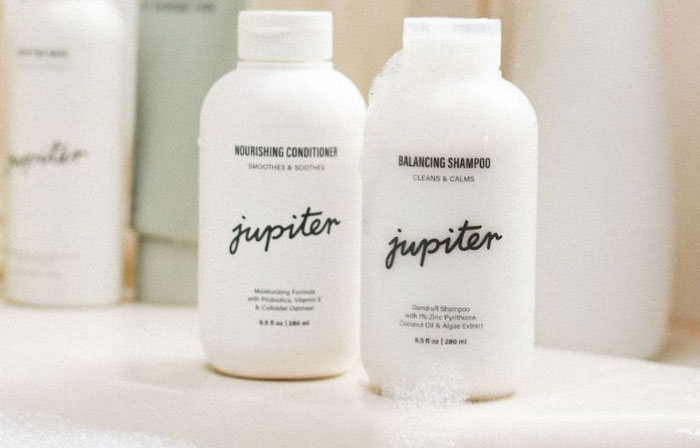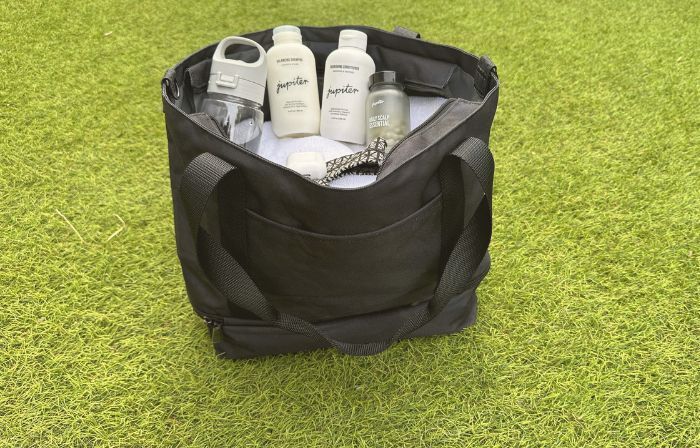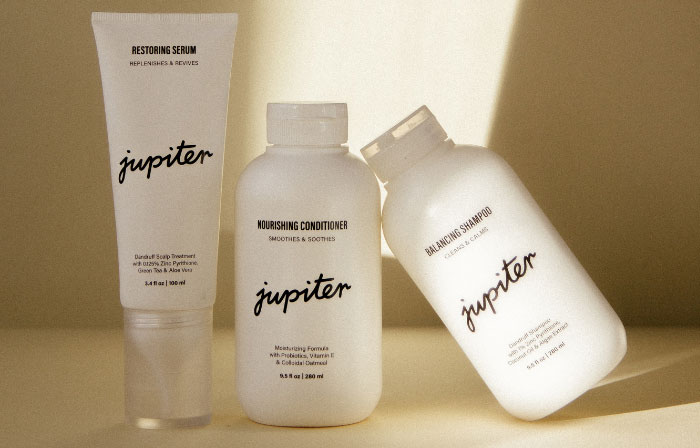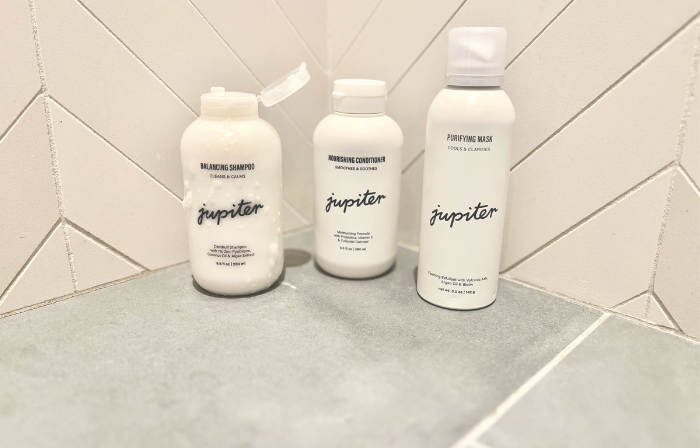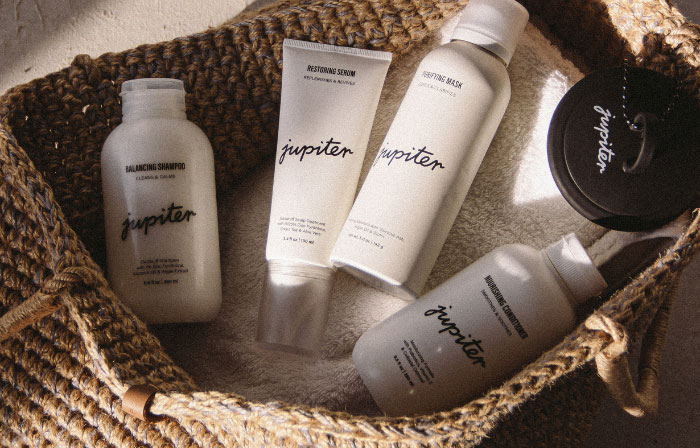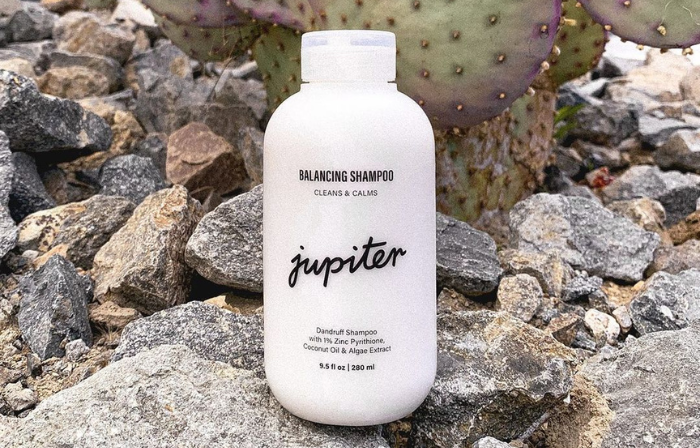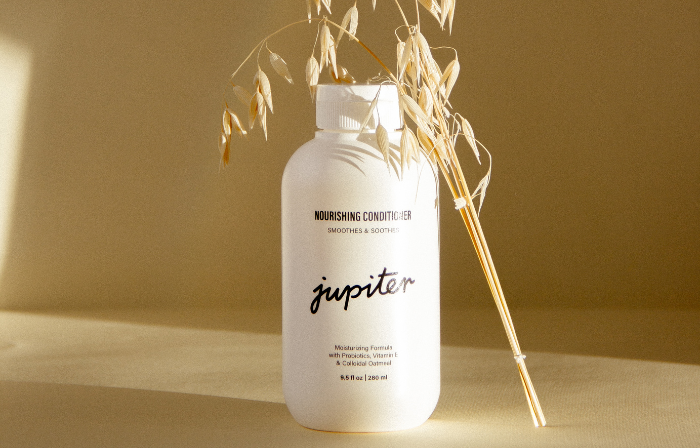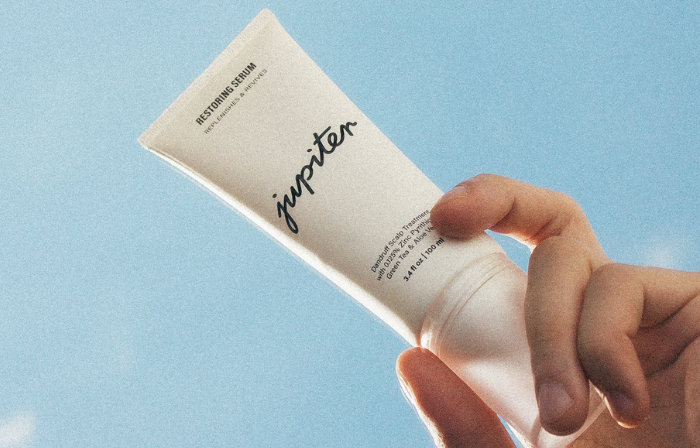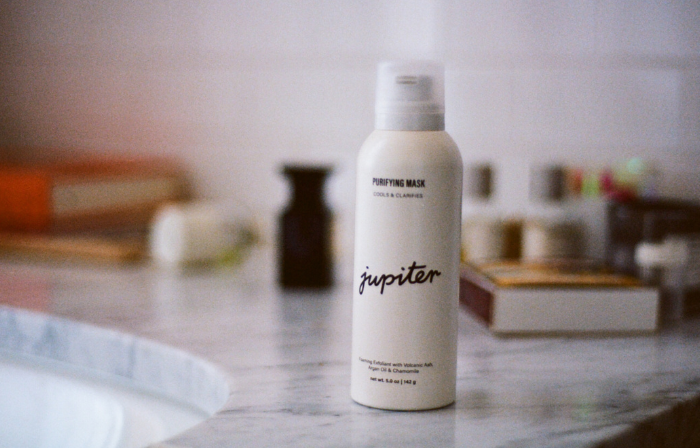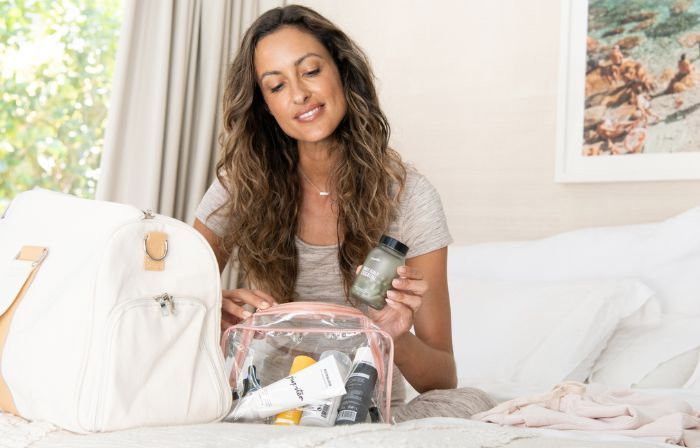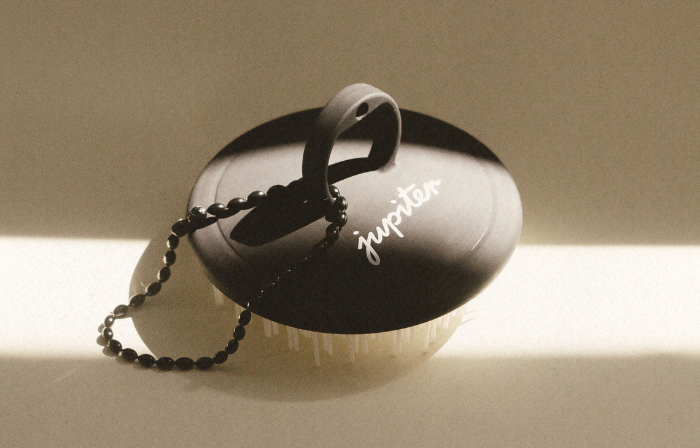🫶🏻 OUR 5% PLEDGE TO HER
#STRONGHERTHANYESTERDAY - WE DONATE 5% TO WOMEN-DRIVEN CHARITIES. LEARN MORE.
Let’s face it. No one sets out to have a bad hair day. But a head full of damaged hair, well, it sure heightens your chances. Here’s how to go from damaged hair to a healthy, shiny, and vibrant set of locks (hint: it’s through the scalp).
What Is Hair Damage?
Hair damage refers to damage to the cuticle (outer layer) of the hair. Damaged hair looks dry, frayed, frizzy, tangled, brittle, rough, and dull. There isn’t a way to fully correct damaged hair, but lessening its appearance is possible with the use of the right scalp and hair care products.
What Causes Damaged Hair?
Damaged hair can result from a number of different causes including:
Exposure to the sun
Certain hair care products (including shampoos, styling products, dry shampoo and hair dyes)
Overuse of heated styling tools
Over-combing or brushing wet hair
Tips To Care For & Prevent Damaged Hair
Below are 17 tips to reduce and prevent damaged hair.
1. Don’t Brush Wet Hair
Wet hair is very delicate and more prone to breakage than dry hair. Always comb wet hair with a wide-toothed comb, and never use a brush. Use a detangling treatment or leave-in conditioner to reduce tangles and stop further hair breakage (and switch over to a shampoo like our Balancing Shampoo, which is proven to reduce breakage by up to 30%).
2. Use a Soft-Bristled Brush On Dry Hair
If you brush your hair, use a soft-bristled brush like our scalp exfoliator on your dry hair rather than other types of brushes that may cause damage. Brushing your hair disperses your hair’s natural oils from the scalp through the length of the strands and to the ends. This helps make your hair shinier and healthier-looking.
3. Avoid Harsh Ingredients In Hair Care Products
Scalp care products that contain gentle, nourishing ingredients are the foundation of great hair. Harsh chemicals like sulfates strip your hair of natural oils that moisturize your hair. Make sure to read the ingredient labels on your personal care products to ensure you avoid harsh surfactants, synthetic fragrances, and dyes that can further dry out your tendrils.
4. Take Warm (Not Hot) Showers
Taking warm showers instead of hot ones helps prevent damage to your hair. Hot water can strip your hair and skin of its moisture, causing dryness. Try turning down the heat when you're in the shower to prevent moisture loss from your skin and hair. Additionally, According to the American Academy of Dermatology, shortening your shower time is another helpful tip to relieve dry skin.
5. Loosen Your Hairstyles
Tight hairstyles such as ponytails, buns, and braids cause stress on the hair, depending on your hair type. Be mindful not to twist your hair up in the same direction every time you place your hair in a bun or pony.
This causes tension in the same area of the hair, possibly leading to hair loss and thinning. Change the placement of your hair accessories to reduce hair traction and hair thinning.
6. Reduce Your Stress Levels
Just as emotional and mental stress can have physical effects on your skin, high-stress levels can be linked to hair loss and thinning. Try stress management exercises, meditation, healthier eating habits, and getting more rest to keep your stress levels in check and promote a healthier scalp.
7. Trim It Up
Damaged hair often results in split ends, and while they cannot be repaired, they are easily smoothed. Use a hair oil or serum to smooth split ends until you can snag an appointment with your hairstylist for a trim.
Regularly trimming your hair (once every six weeks preferably) removes split ends, leaving your hair healthier-looking and more manageable.
8. See Your Stylist
Snag a professional hair treatment such as a bond-builder or deep conditioning treatment at the salon to go a step further. These treatments can help to make your hair softer, shinier, and more manageable, plus it mends the cuticles.
9. Don’t Shampoo Every Day (Unless You Must)
For those who have normal to dry scalp, shampooing every day may result in dry strands because it can strip your hair and scalp of its natural oils. Try rinsing in warm water on your non-shampoo day and apply a deep conditioning mask to the mid-lengths and ends of the hair.
We recommend washing your hair 3-4 times a week for optimal scalp and hair health, but if you tend to get a greasy scalp quickly (“oily hair”), wash every day.
10. Invest In An Exfoliating Scalp Mask
A purifying scalp mask helps gently exfoliate your scalp to rid it of buildup and debris which can contribute to dull, lifeless hair. Jupiter’s Purifying Mask is formulated with volcanic ash for exfoliation, and scalp-healthy ingredients like biotin and argan oil that leave your hair looking shiny and refreshed.
The outer layer of the hair is the cuticle layer. The cuticle protects the inner layers of the hair strand from damage.
11. Turn Down The Heat
Heated styling tools damage your hair if the heat is too warm, or if they are used too often. Try turning the heat down on your tools and use a thermal heat-protectant cream or spray prior to styling to prevent further damage.
Allow your hair to air dry when possible to lessen the effects of a heated blow dryer. When using a hairdryer, attach the diffuser to reduce damage and amp up a glossier ‘do.
12. Dry Your Hair With a T-Shirt
Ditch the towel for a clean cotton t-shirt. Using a t-shirt to dry your hair is much gentler than using a towel, and gentle is the way to go when it comes to drying your delicate wet hair.
13. Use Sunscreen
Your hair and scalp get damaged by the sun’s UV rays, just like your skin. If you plan to spend time in the sun, wear a hat or a scarf over your hair and apply scalp sunscreen.
Yes, scalp sunscreen does exist, and it protects the skin of your scalp from sun damage. A sunburned scalp can mean itching, flaking, and irritation and makes for a less than stellar environment for healthy hair growth.
14. Limit Exposure To Chlorine
Speaking of the sun, if you plan to go swimming, keep in mind that chlorine can damage the hair. Chlorine pulls moisture from your hair, leaving it dry, brittle, and damaged.
Try using hair care products that protect against the effects of chlorine, and invest in a deep conditioning mask.
15. Use Hair Oil
Fatty acids and vitamin E nourish your strands, so using professionally formulated hair oil such as argan oil and coconut oil is highly beneficial for your hair.
16. Try Essential Oils
Many essential oils benefit the hair and scalp, such as tea tree oil, lavender oil, peppermint oil, ylang-ylang, chamomile, and clary sage. Look for hair care products that contain these essential oils on the ingredients list for the healthiest and safest way to introduce these powerful oils to your hair care routine.
17. Monitor Your Scalp
Product buildup is known for causing scalp dryness, irritation, and inflammation. Try using a scalp purifying scrub to exfoliate and remove dead skin cells and product buildup. If you have dandruff, scalp discomfort, or simply want to make sure your scalp is balanced and healthy, check out Juipter’s set of scalp care products designed to deliver healthy-looking, gorgeous hair.
Types of Hair Damage & Tips To Lessen The Appearance of Each
Your hair becomes damaged for many reasons, and sometimes you may not realize it's happening. Color, chemical, and heat damage are the main types of hair damage. Below we've outlined each and how to treat them.
Color Damage
If you color-treat your hair, you know that the process may involve many chemicals, color-stripping, and depositing. The damage remains on your strands until your hair grows out completely, making it somewhat frustrating if you’re waiting to transition hair color.
Finding a color expert who cares about your hair's condition is essential to prevent excessive damage. A professional colorist knows which level of developers to use, when not to overlap color and bleach on existing color-treated hair, and the proper use of hair coloring products.
There’s a reason why your colorist recommends you use color-safe hair care products after a coloring treatment. Using the wrong hair care products lifts the hair's cuticle, causing color fade and loss of moisture.
Chemical Damage
Hair breakage occurs during chemical hair treatments such as perms and relaxers. It’s impossible to reverse chemical hair damage, so prevention is key. Use protein pre-treatments on your dry hair before shampooing, at-home bond-building treatments, and apply hydrating leave-in conditioners.
Use deep conditioning masks on your hair weekly to nourish your strands and promote healthy hair.
Heat Damage
Heat styling tools wreak havoc on your hair if you use them daily at high temps. Heat opens the hair cuticle, allowing the hair to dry and take shape. Always use a thermal heat-protectant before reaching for a heated styling tool including blow dryers, flat irons, and curling irons.
Use a heat setting that is appropriate for your hair texture. For example, use a lower heat setting if you have fine hair.
What Are the Layers of the Hair and How Does Hair Damage Occur?
To understand dry and damaged hair, it's important to understand the layers of a hair strand. Each hair strand contains an outer, middle, and inner layer.
Cuticle: Outer Layer
The outer layer of the hair is the cuticle layer. It consists of clear, flat cells that overlap with each other. The cuticle protects the inner layers of the hair strand from damage. When the cuticle is healthy, your hair is shiny, but when damaged, the cuticle is dull and may expose the middle layer (cortex). An exposed cortex results in the unraveling of keratin cells, leading to split ends. Hair becomes lackluster and brittle when the cuticle becomes damaged.
Cortex: Middle Layer
The cortex consists of long curly proteins and cells. It is the central part of the hair, and it is the thickest layer of the three. The cortex includes the hair’s pigment (melanin). The cortex becomes damaged when the cuticle is damaged. The cortex cannot heal itself, so a trim is necessary to remove split ends. The cuticle protects the hair cortex, and the cortex protects the medulla.
Medulla: Inner Layer
The inner layer of each hair fiber contains the medulla, which consists of a disorganized core of soft cells. The medulla is the backbone of the hair’s structure; however, it is not always present in fine or blonde hair types.
The medulla contains all of the hair shaft’s moisture, so when the cuticle is damaged, the medulla releases moisture, and the hair becomes dry.
Bottom Line
Damaged hair is often the result of many different lifestyle and genetic factors, including poor scalp health. Restore your hair’s health by following the above tips to reduce damage and smooth your hair’s cuticle. A salon professional can also help you maintain healthy hair by suggesting special hair treatments designed for your hair type.
Whether your hair is dry and damaged, or you're looking to maintain your healthy locks, opt for a scalp-healthy hair care line that promotes a balanced scalp and nourished hair. Check out Jupiter’s Flake-Free Duo a soothing, medicated shampoo formulated to help reduce the signs of dandruff and ultra-hydrating conditioner to moisturize your scalp for more manageable hair. Best of all, they’re clean (sulfate, paraben, and phthalate-free), vegan, and cruelty free products safe for all hair types.
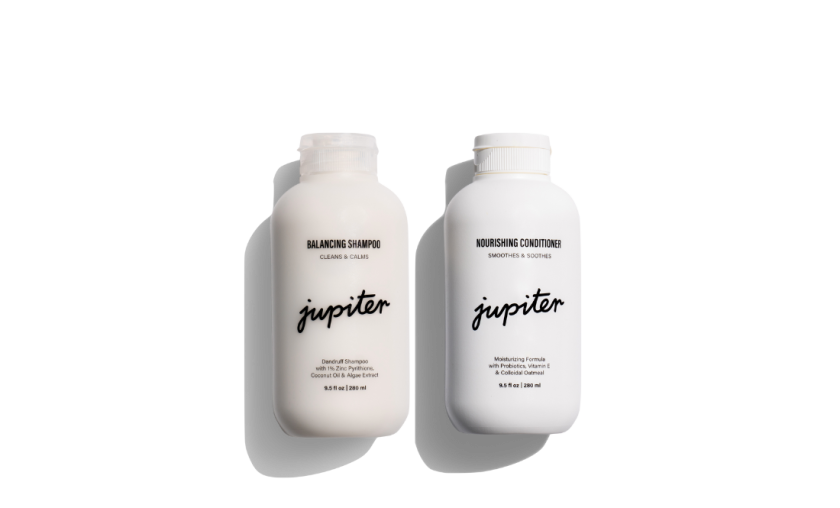
Our best-selling duo! The medicated Shampoo tends to your dandruff while the Conditioner’s combo of colloidal oatmeal and coconut oil moisturizes your scalp and hair. Safe for everyday use. Check out the Advanced Oil Control Trio if you flake on the regular and could use a bit more control.
Travelling? Check out our Weekender Capsules for on-the-go scalp care.
